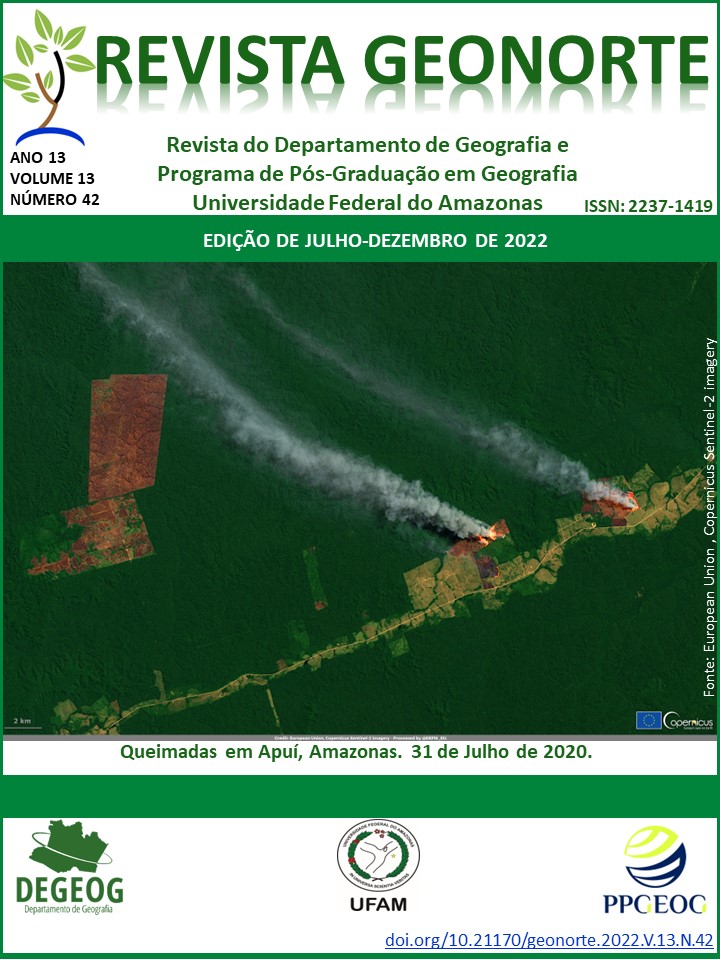MAPPING GROUNDWATER CONTAMINATION FROM GAS STATIONS USING GROUND PENETRATING RADAR (GPR) IN AMAZONIA, BRAZIL
DOI:
https://doi.org/10.21170/geonorte.2022.V.13.N.42.148.160Keywords:
Método Geofísico, Água Subterrânea, Hidrocarbonetos, Poluição, Centro UrbanoAbstract
The Ground Penetration Radar (GPR/ GSSI-SIR 3000-Common-offset) was used to detect and scale underground structures and hydrocarbon pollution plumes around gas stations in the municipality of Santarém (Pará/ Amazon/ Brazil). Two of them are among the oldest in the city and they are located in a very populated area, which can represent a great risk of subsoil and groundwater contamination because of fossil fuel leaks. The present research used 100 ns and 175 ns time windows, with a 270 MHz antenna, and the received data were processed via Software Reflex Win/ V4.5.5. The results showed that the fuel tanks are best reflected in the 100 ns configuration, while the water table and the hydrocarbon plume were more clearly identified in the 175 ns configuration due to the greater depth range. Therefore, the shallow mapping of the subsoil with the GPR method, using the two complementary configurations, was effective in locating and delineating hydrocarbon plumes up to a depth of 4 meters. Thus, the method proved to be efficient in obtaining important data to guide sanitation and public health services and the elaboration of environmental public policies and licensing of companies dealing with potentially polluting activities.
Downloads
Downloads
Published
How to Cite
Issue
Section
License
Autores que publicam nesta revista concordam com os seguintes termos:
- Autores mantém os direitos autorais e concedem à revista o direito de primeira publicação, com o trabalho simultaneamente licenciado sob a Licença Creative Commons Attribution que permite o compartilhamento do trabalho com reconhecimento da autoria e publicação inicial nesta revista.
- Autores têm autorização para assumir contratos adicionais separadamente, para distribuição não-exclusiva da versão do trabalho publicada nesta revista (ex.: publicar em repositório institucional ou como capítulo de livro), com reconhecimento de autoria e publicação inicial nesta revista.
- Autores têm permissão e são estimulados a publicar e distribuir seu trabalho online (ex.: em repositórios institucionais ou na sua página pessoal) a qualquer ponto antes ou durante o processo editorial, já que isso pode gerar alterações produtivas, bem como aumentar o impacto e a citação do trabalho publicado (Veja O Efeito do Acesso Livre).






